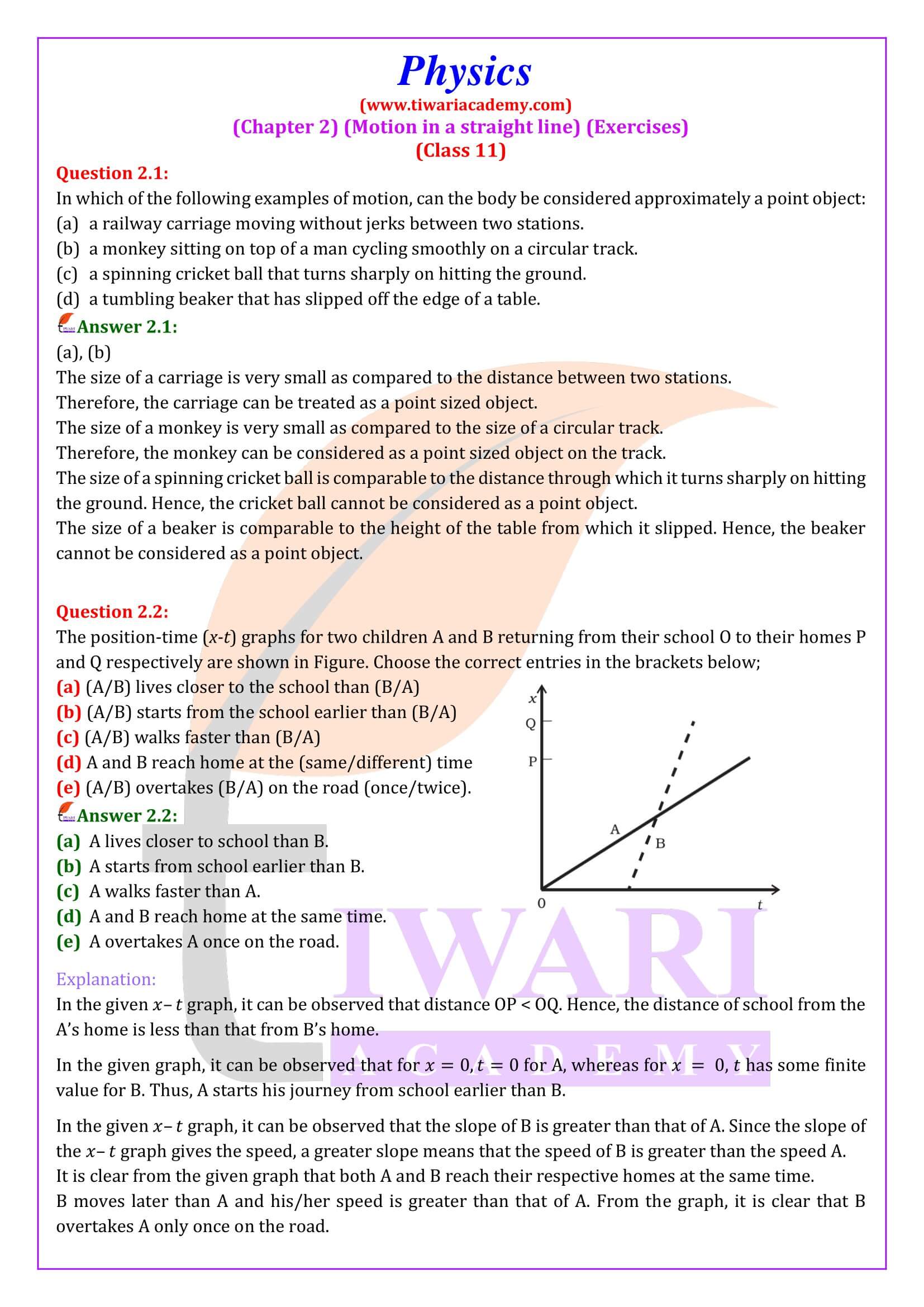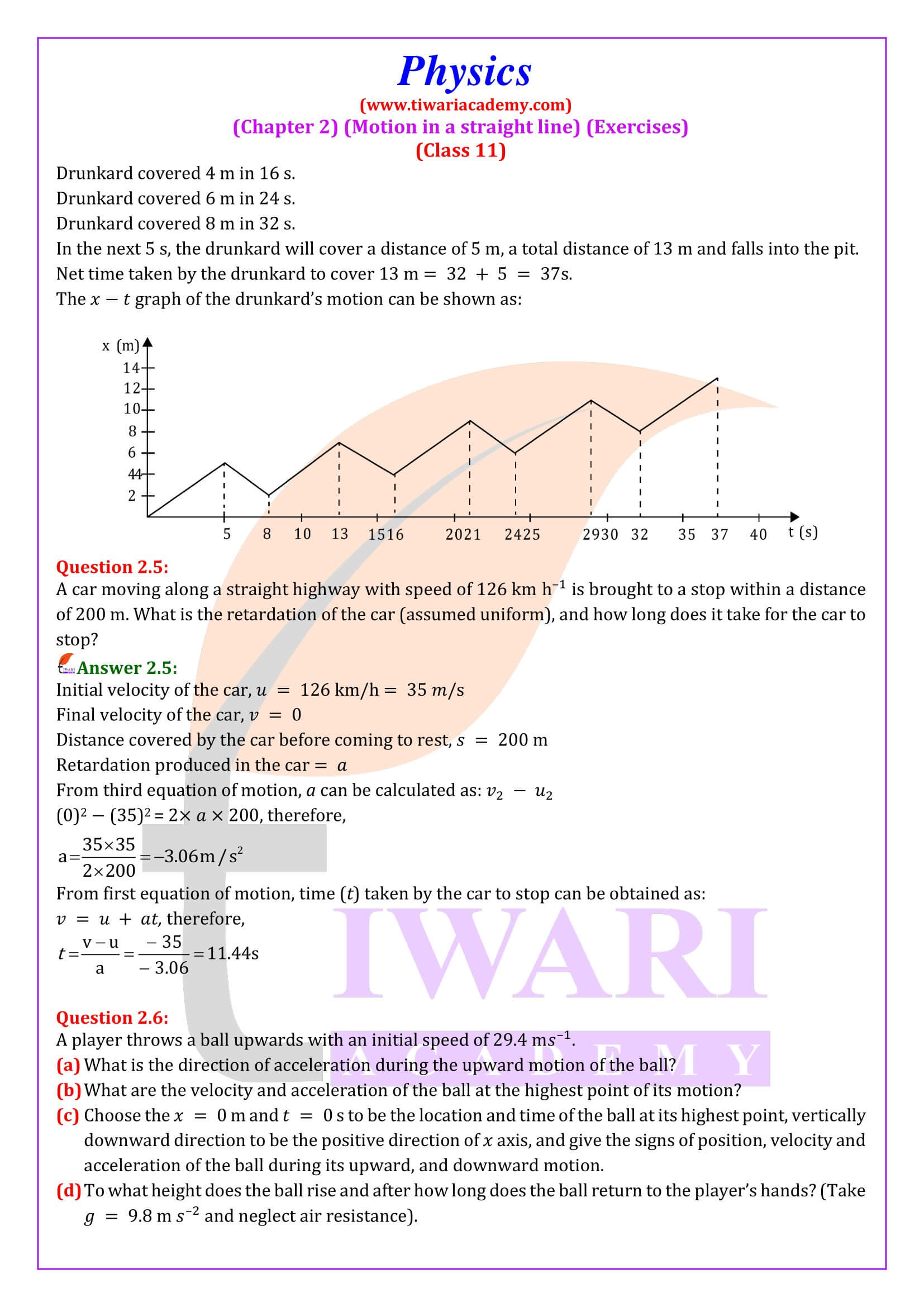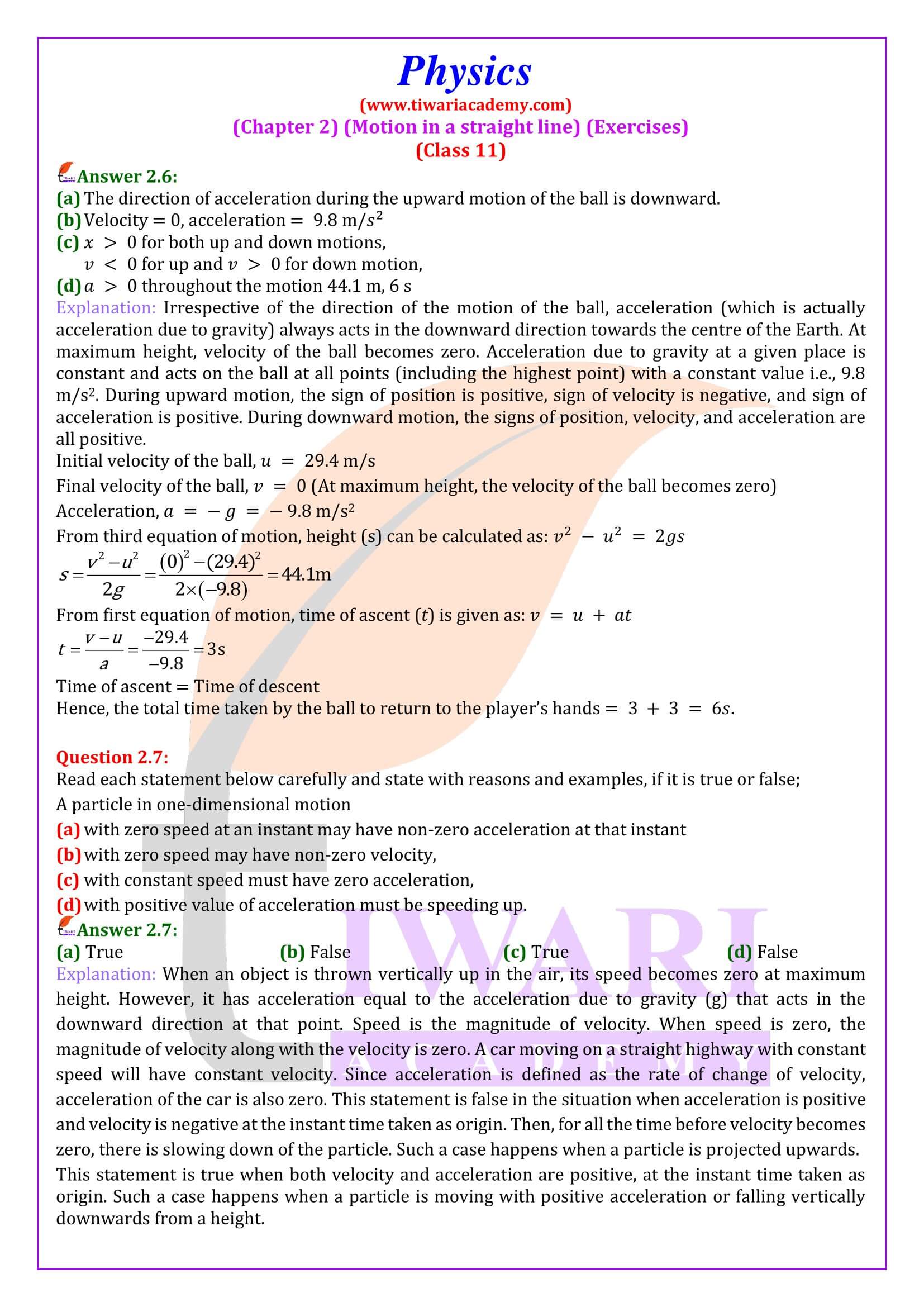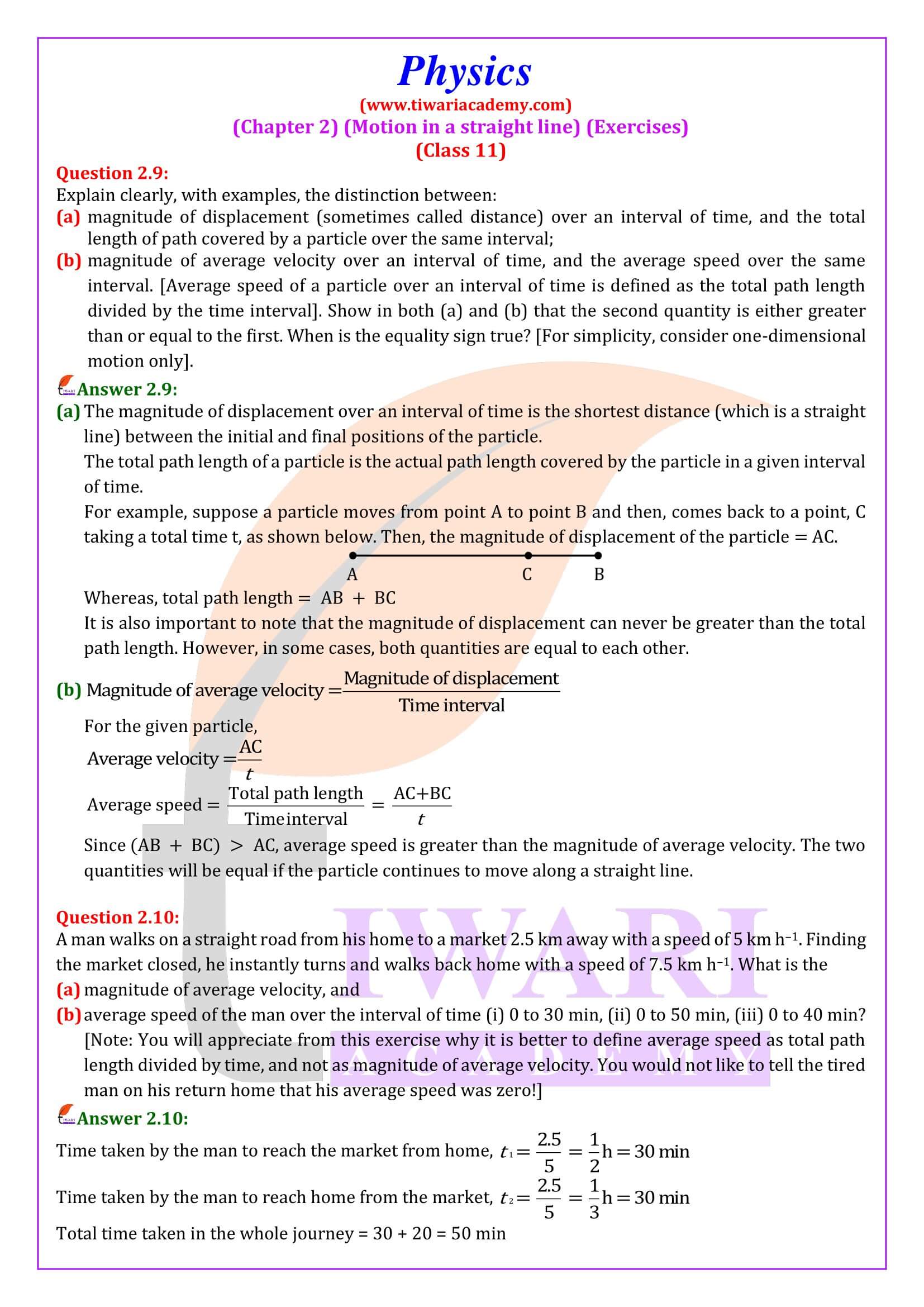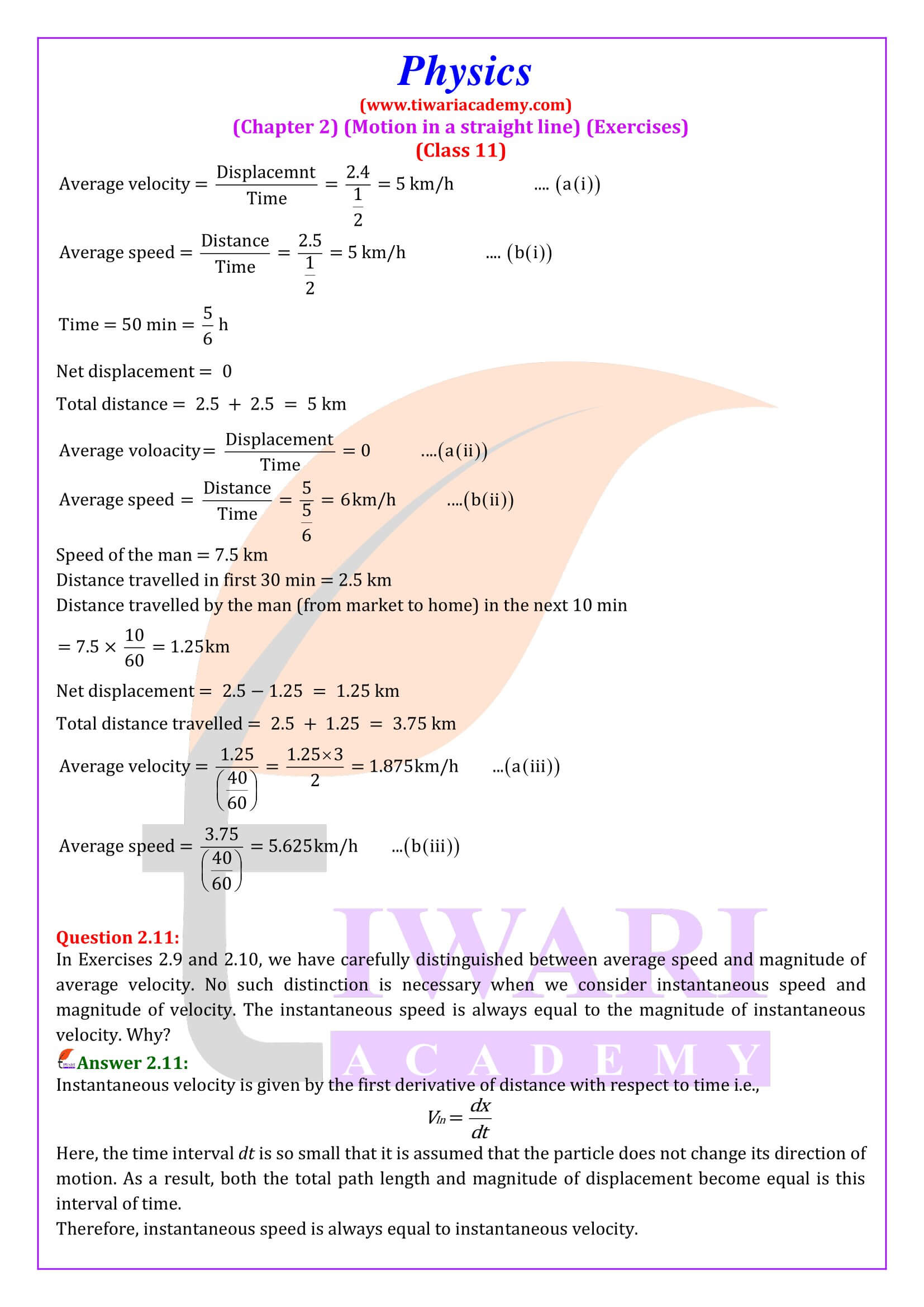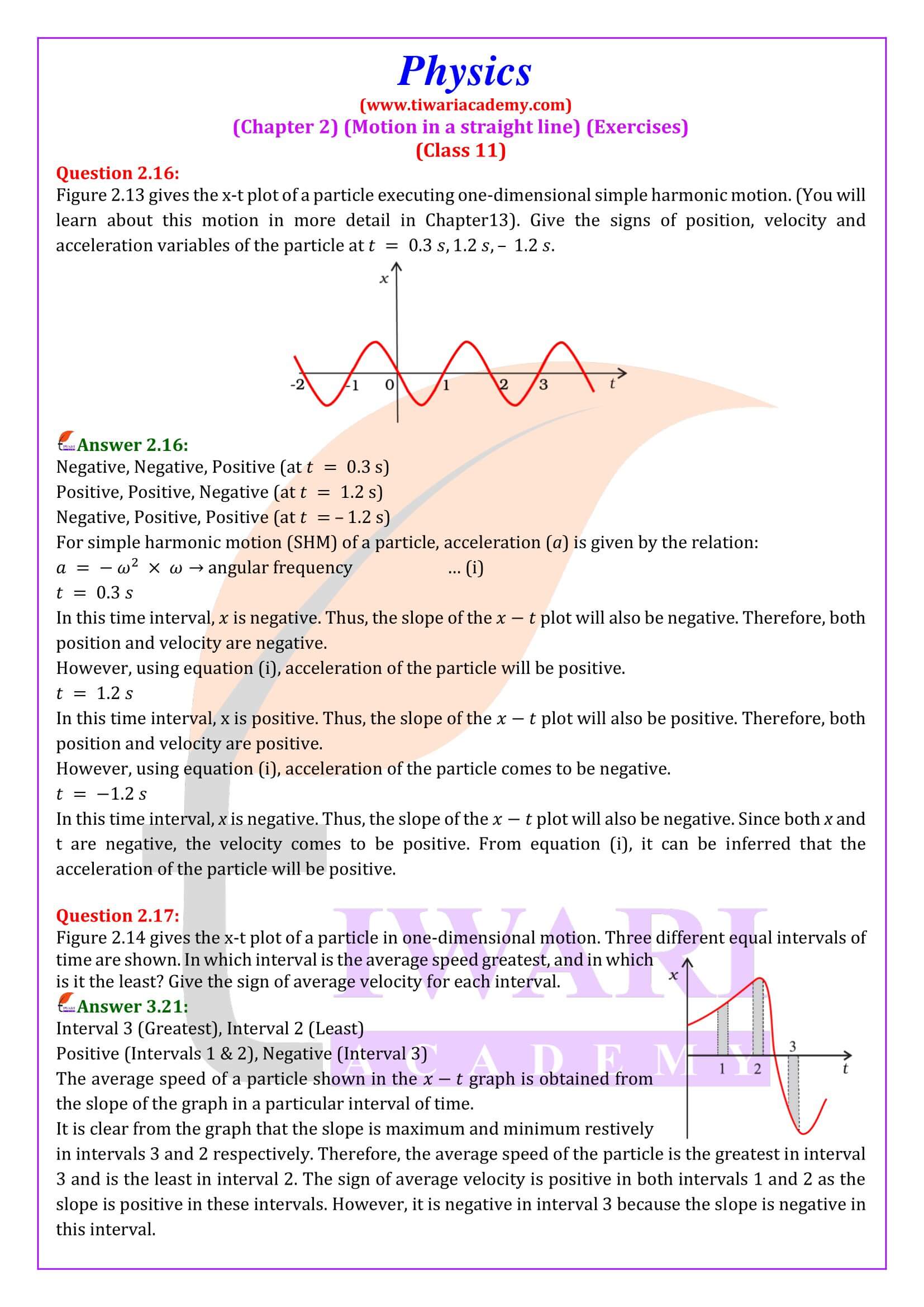NCERT Solutions for Class 11 Physics Chapter 2 Motion in a Straight Line in Hindi and English Medium updated for new academic session 2025-26 with extra multiple choice questions with answers. Review the CBSE Class 11 Physics new syllabus and identify the topics that are considered important. These could be topics that are frequently asked in exams or form the foundation for more advanced concepts.
Class 11 Physics Chapter 2 Motion in a Straight Line Question Answers
Class 11 Physics Chapter 2 MCQ
Which one of the following is the unit of velocity?
The displacement-time graph of a moving object is a straight line. Then,
If the displacement of an object is zero, then what can we say about its distance covered?
Which of the following changes when a particle is moving with uniform velocity.
Average speed of an Object
The ratio of the total distance traveled in the specified direction to the total time it takes the body to travel that distance called average speed. For example, if you walk to a campsite 1 km away and then return to the starting point within an hour, your average speed will be zero because your starting and ending positions are the same. When a particle moves from one point to another on the X and Y axes. It is said to be moving in a plane. The plane consists of the X and Y axes and is used to represent the position of the particles. Motion in a plane can also be described in terms of the X and Y coordinates of the particles and the rate at which they change. Motion can be drawn on the Cartesian plane.
Class 11 Physics Chapter 2 Multiple Choice Questions
The distance travelled by an object is directly proportional to the time taken. Its acceleration
The distance travelled by an object is directly proportional to the time taken. Its speed
A particle is moving with a constant speed along straight line path. A force is not required to
When a body is dropped from a tower, then there is an increase in its
Instantaneous Speed
Instantaneous speed is the speed of an object in motion at a given moment. This is determined in the same way as the average speed, but we reduce the time period so that it is close to zero. If an object has a standard speed over a period of time, its average and instantaneous speed can be the same. The formula for instantaneous velocity is that as time approaches zero, the variation of distance exceeds the variation limit of time.
The quantity that tells us how fast an object is moving anywhere along its path is the instantaneous velocity, often simply called velocity. It is the average speed between two points on the path, and the time (and therefore the displacement) between the two point’s approaches the zero limit. To illustrate this idea mathematically, we need to represent position x as a continuous function of t.
Preparation of Class 11 Physics for Exams
One thing to keep in mind while preparing for the class 11 physics exam. For the preparation of physics exam, follow the NCERT textbook carefully as it covers the whole syllabus. Students should practice each derivation more than two or three times.
There is a compulsory derivation question in the physics exam. Students should pay attention to the main features of the diagram in order to get complete notes on physics questions. Students need to master important formulas so they can easily solve numerical problems.
What are the main topics of chapter 2 of physics for class 11?
The main topics of chapter 2 is kinematics, linear motion. Mechanics is a term in science which deals with the movement of physical objects in all the faces – solid, liquid or gas. The chapter 2 of 11th Physics explains all relevant terms in simple, easy-to-understand language. This distinguishes between rest and motion. You will also encounter the differences between the terms position, distance and displacement, and speed and velocity. This chapter explains acceleration and covers units and mathematical representation.
What types of motion are mentioned in chapter 2 of Physics Class 11?
As we know that motion is the change in position or it can be defined as the orientation of an object over time. In Class 11 Physics chapter 2, the two types of motions are explained. One is uniform motion whereas the other one is non-uniform motion. Uniform motion exists when an object travels equal distances in equal time intervals. On the other hand, non-uniform motion exists when an object travels unequal distances in equal time intervals. During uniform motion, the speed of an object remains constant. When an object moves at a non-uniform speed, the magnitude of the speed increases or decreases over time.
What is the difference between distance and displacement in chapter 2 of 11th Physics textbook?
Distance refers to the actual path traveled by an object, while displacement refers to the difference between the initial position and the final position. In class 11 Physics chapter 2, we will study it in detail. The first is a scalar and the second is a vector. The examples and questions in 11th Physics chapter 2 explain these terms much better. The distance traveled by an object is always positive, it can never be negative or zero. However, the displacement of an object can be positive, negative or even zero. The distance depends on the path traveled by the object, but the displacement does not depend on the path.
